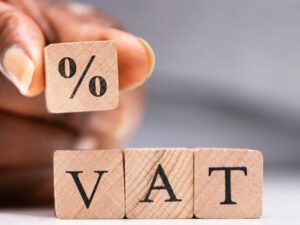[imagesource: Getty]
The standard recommendation for quarantine or self-isolation if you’ve reentered a country from elsewhere, or feel that you may have been exposed to the virus, has thus far been 14 days.
Since that time frame was implemented, and as studies reveal more about the virus, conflicting recommendations have come at us from all sides.
The South African government has issued a series of slideshows and other information which appears different from recommendations and guidelines from the World Health Organisation and other countries.
Then there are the medical experts who have spoken to the media on occasion, bringing their own interpretations of how the virus should be handled.
You’d be forgiven for wanting to err on the side of caution and never leave the house again.
To respond to the confusion, The Daily Maverick has curated a team of health professionals, referred to as The Scientists Collective, to debunk misinformation and provide clarity when it comes to a variety of topics, including self-isolation, quarantine, the difference between the two, and how long each should be.
The first thing you need to wrap your head around is the difference between quarantine, self-isolation, and physical distancing.
Isolation is what you do after you’ve developed symptoms of COVID-19, or test positive for the virus. You need to stay away from others to prevent them from contracting it. This includes asymptomatic people who test positive for the virus.
Isolation will usually happen in your home, unless your symptoms are severe, in which case you will likely be hospitalised. Those you have come in contact with should quarantine themselves.
Quarantine means that you have had a high-risk exposure to the virus. In this case, you need to stay away from people in case you have contracted the virus. This also means ‘stay home’. Anyone who lives with you will have to stay home as well.
Physical distancing refers to the distance that you need to maintain between yourself and others (a recommended two metres) when you’re out and about.
Here are the recommendations for isolation or quarantine:
- You should isolate for 10 days after the start of suggestive symptoms (unless hospitalised, see below) or testing positive, and quarantine for 14 days if you are exposed to a high-risk situation.
- There is no need for you to test if you are asymptomatic (unless you are being screened as a frontline healthcare worker).
- There is also no need to test or retest at the end of quarantine or isolation periods.
- Do not rely on a negative test result to say you are safe, especially if you may expose vulnerable people, like the elderly or people with chronic medical conditions or cancer.
A negative test doesn’t somehow make you superhuman. You can still contract the virus.
The reasoning behind the timelines is grounded in what experts have discovered about the coronavirus since it first appeared on the scene.
Infection from SARS-CoV-2 starts with exposure to a person who is infectious. If you get infected, there is a period of a few days, called the incubation period(usually 2-4 days, but can be longer) in which you do not show any symptoms.
After a few days of symptoms, you become less infectious, and (unless you were very seriously ill) 10 days after symptoms started you are very unlikely to be infectious (even if you still have some symptoms or test positive on the PCR tests, which shows dead virus).
The guidelines above are conservative, but it’s a good idea to adhere to them. As we’ve come to discover over the past few months, this virus is unpredictable and highly infectious.
Furthermore, the extra four days in the 14-day quarantine period allows for the incubation period to play out.
Here’s how to work things out depending on the circumstances that led up to your suspicions that you may have contracted the virus:
I am ill with symptoms that may be SARS-CoV-2 (cough, fever, sore throat, loss of smell/taste, etc
- The 10-day clock for isolation starts from the day symptoms started.
I am ill with symptoms that may be SARS-CoV-2 and tested positive on day 4 of symptoms. When will I be able to de-isolate?
- The 10-day clock still starts from the day symptoms started.
I have no symptoms but I got a test and the result came back positive 3-days later. When will I be able to de-isolate?
- The isolation clock starts from when you had the test, not when you got the result.
I have been exposed to someone who has tested positive or has been diagnosed with Covid-19, or I was in a high-risk situation and I am worried. How long should I quarantine for?
- The 14-day clock starts from the last exposure.
Studies have suggested that people who have recovered from the virus have built up some form of immunity, but better to be safe than sorry when venturing out into the world – keep that face mask on.
It’s important to remember that even if you test negative for the virus, you can still have the virus. It may be too early to detect it, or too late if you are no longer infectious. The sample could also have fallen victim to technical issues when it was being processed.
If the result is positive and you are infected, you should do everything that you can to prevent infecting others.
The Daily Maverick breaks everything down, in even more detail, if you’d like to read the full article.
To decrease your chances of contracting COVID-19, wash your hands on the regular, wear a face mask in public, and while I know it’s hard not to see friends and family, try and keep your distance.
If you feel a bit off, or display any symptoms, stay home.
[source:dailymaverick]





